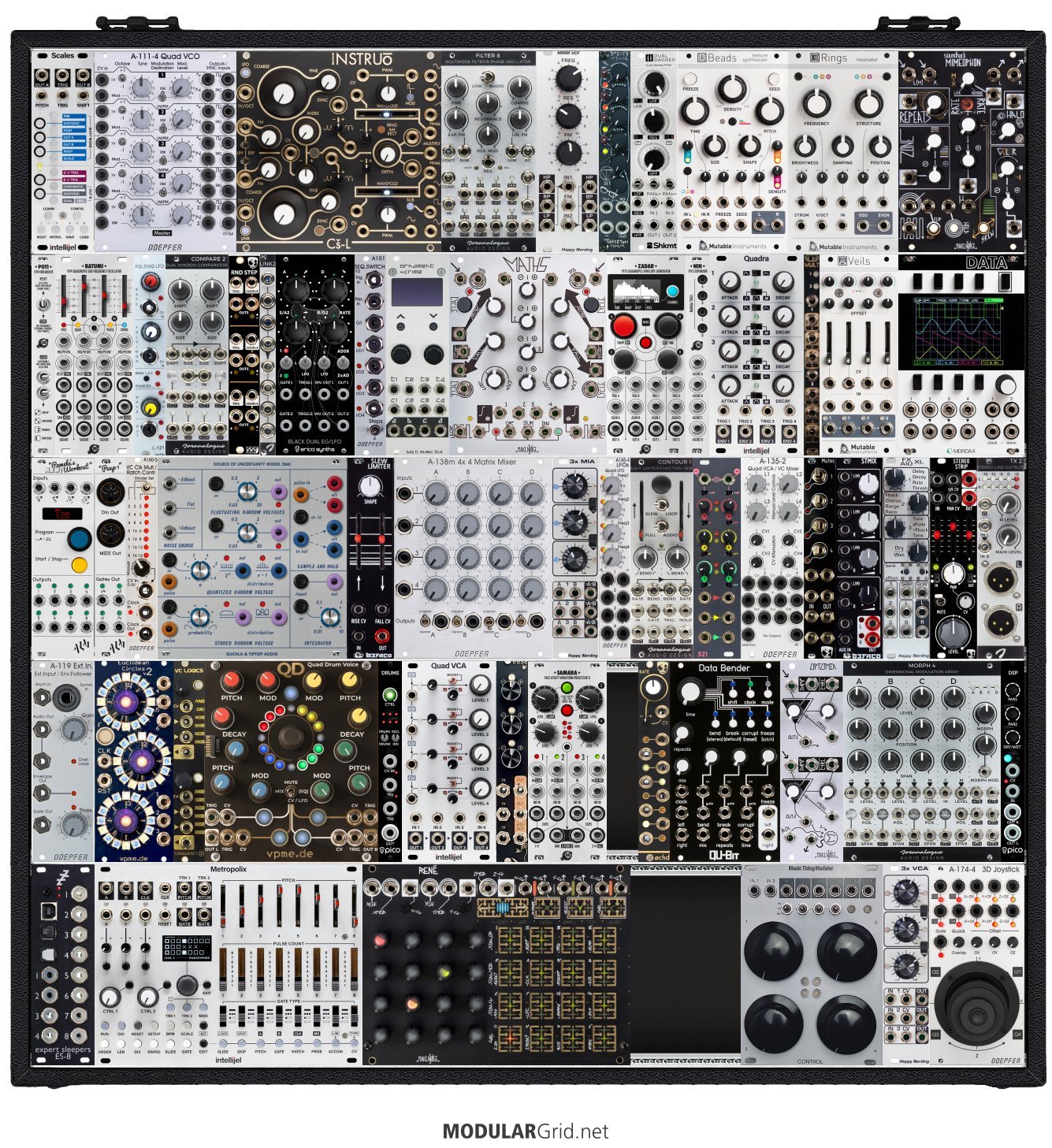Hi all,
I've been dipping my toes into modular for about a year and a half now, and am starting to think about expanding into a serious system. I've been eyeing the Case from Lake resealable 15u 126 hp model (https://www.casefromlake.com/product-page/15u-126-hp-84-104-or-other-eurorack-portable-case-powered-patched-resealable) as being sufficient for me to build a rack without too many sacrifices (no harm in dreaming big and pretending I have the funds). I put together the linked rack to see if this is the direction I want to head.
Goals of the rack:
1) Be interactive and playable.
2) Able to perform hands-off generative music.
3) Be a versatile multi-voice instrument with lots of sound mangling possibilities.
4) Be self-contained when needed, and able to connect with external gear as needed.
Planning the rack:
1) Making it interactive - I figured the "playing surface" would be the outside perimeter (rows 1 and 5 and the exteriors of the inner rows), as the inner rows would hard to access once patched. I added joysticks and some macro-controllers, and placed the more wiggle-able modules on the perimeter o make it more playable.
2) Grouping by function - I have a general pattern starting with sequencers and midi in the bottom left, moving up to inputs and drums and then triggers and gates and randomness in the center. Above that are modulators and then the voices on the top left. Moving to the top right, there are audio manipulators, below that are envelopes and the like. The center right will be the main output area, with mixers and effects and such. The bottom right has more modulators and other interactive modules. Utilities are sprinkled throughout.
Questions:
1) Am I thinking along the right track for an instrument that will meet my goals?
2) Am I missing anything important, or are there better/more available modules for the job?
3) Are there redundancies and modules I can remove to reclaim hp?
4) Do you have suggestions on other ways to organize the rack to make it a coherent and playable instrument?
Thanks a bunch everyone!


